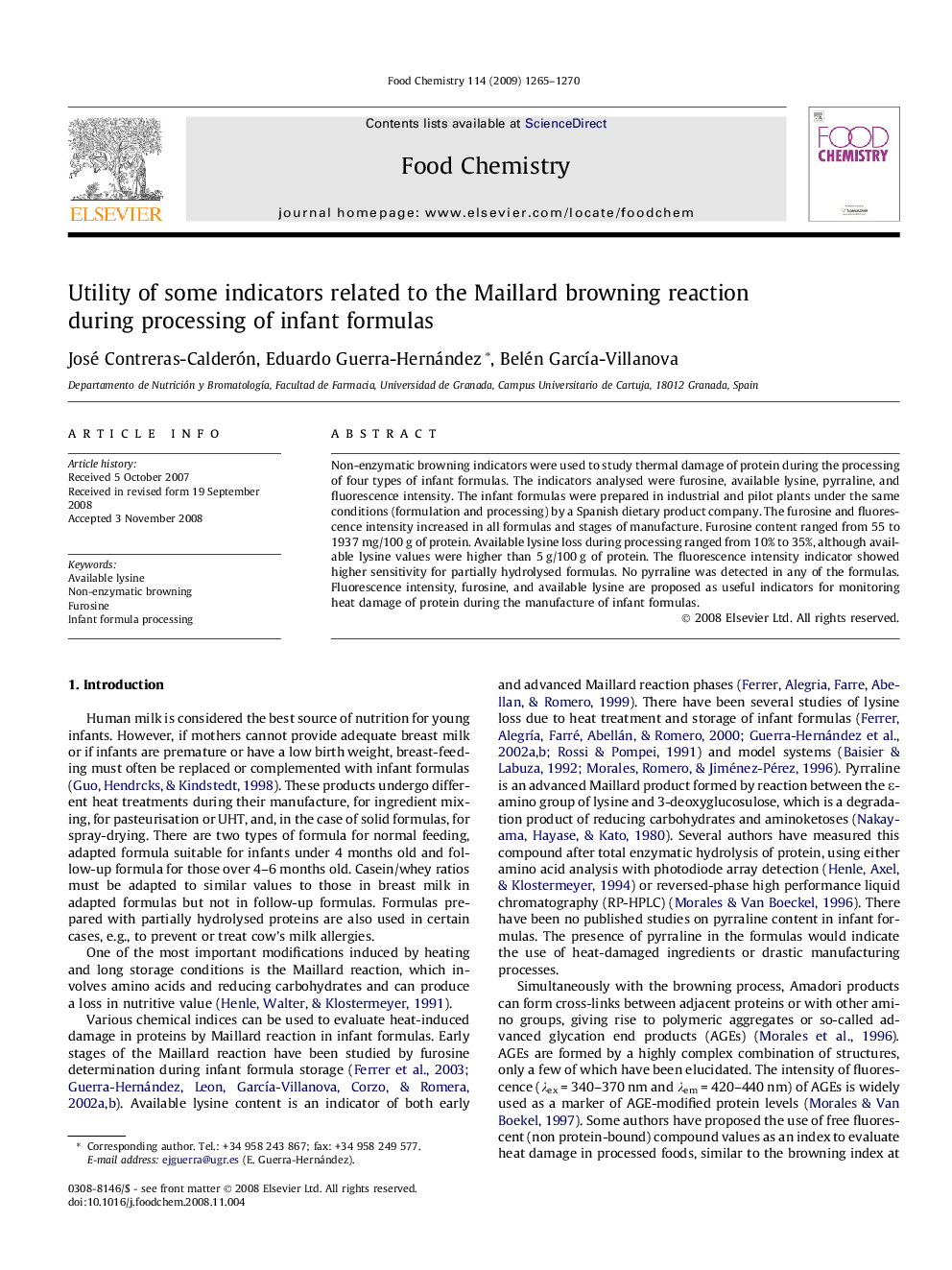| Article ID | Journal | Published Year | Pages | File Type |
|---|---|---|---|---|
| 1186227 | Food Chemistry | 2009 | 6 Pages |
Non-enzymatic browning indicators were used to study thermal damage of protein during the processing of four types of infant formulas. The indicators analysed were furosine, available lysine, pyrraline, and fluorescence intensity. The infant formulas were prepared in industrial and pilot plants under the same conditions (formulation and processing) by a Spanish dietary product company. The furosine and fluorescence intensity increased in all formulas and stages of manufacture. Furosine content ranged from 55 to 1937 mg/100 g of protein. Available lysine loss during processing ranged from 10% to 35%, although available lysine values were higher than 5 g/100 g of protein. The fluorescence intensity indicator showed higher sensitivity for partially hydrolysed formulas. No pyrraline was detected in any of the formulas. Fluorescence intensity, furosine, and available lysine are proposed as useful indicators for monitoring heat damage of protein during the manufacture of infant formulas.
